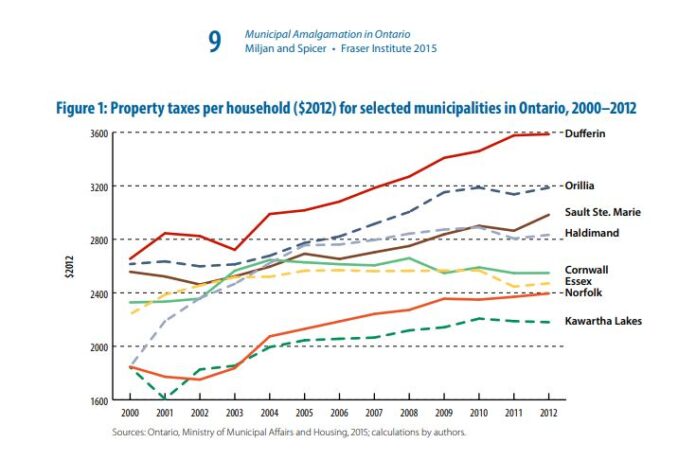
Minden Hills mayor Brent Devolin is correct when he says amalgamation won’t save money, just as warden Liz Danielsen is justified in questioning if it will.
The majority of studies on Canadian amalgamations have not found cost savings.
Zachary Spicer is an associate professor in the School of Public Policy and Administration at York University. He has extensively researched and written about amalgamations nationwide.
Speaking to The Highlander, Spicer said on the surface it appears cost saving arguments make sense.
For example, “do we need 32 councillors? Do we need four fire chiefs? Do we need five CAOs? And you may look at what some of these people make, especially the CAOs, and you say, ‘well, that’s a significant chunk. We can get rid of them’.”
However, he said the challenge is these people don’t necessarily go away.
“What you are creating is a larger government. You’re still providing services to the same amount of people. You’re just doing it from one centralized location. So, I think probably the likeliest outcome is that five CAOs become one CAO and four deputy CAOs because the fact of the matter is you can’t run the County from a single- tier government on the workforce of just the County.”
He added, “The County administration is probably quite lean because there are four counterparts for each position doing the heavy lifting at the local level. So, I would caution we don’t normally see mass layoffs. You’re not going to fire 200 people and expect that over time the workforce won’t creep back up to where it is right now.”
And while harmonization of services may be perceived as a good thing, Spicer said it can come at an added cost.
“Government would probably cost more under a single-tier model. And part of that is larger governments are called upon to do more things. With smaller governments there is a certain service standard that residents are used to. So, when you amalgamate you create one large government that has more capacity to do things. The service precedent in terms of residents seem to adjust accordingly and so you would likely see an increase in service costs as things go up.”
He added that smaller governments allow the tailoring of services to tax ratio better. “With larger government, some of that is lost because it has to be consistent standard across.”
Politicians not big cost item
Some in the County might argue that reducing the number of politicians to eight positions from 32 would produce substantial savings, but findings to date say it’s minimal.
In their study of Chatham-Kent, Kingston and Central Elgin, Joseph
Kushner and David Siegel said while those areas went from 158 to 42 elected officials, councillors’ wages and benefits represented less than one per cent of
total municipal expenditures, so the budget impact of fewer elected officials was “miniscule.” Siegel also prepared a policy brief for the Niagara Community Observatory that argued that not only
is little money saved, but reducing the number of councillors has the detrimental effect of reducing access to councillors.
Spicer agreed that by eliminating politicians, you also eliminate representation.
Choice does not have to be binary
Spicer said the choice in Haliburton County does not have to be binary, “between either doing exactly what we’re doing now or doing something radically different, which is consolidate lower-tier governments or create a single government.”
He said there is a middle ground “and that is a robust program of service sharing, “which can certainly happen right now.
“So, with the service delivery review, I suspect that there has been some of that where there has been some analysis of where they can share services. There is
a possibility to keep walking down that road. You can also share regulations. You can share CAOs. You can share staff. You can harmonize committees. There’s a number of different things to do in the middle between amalgamation and non- amalgamation.
“I think the big thing about amalgamation is to what end? To what end are we really doing this? What can we accomplish through amalgamation that we can’t accomplish in some other way? It is very tough to go back once you’ve done it. De-amalgamation is a very, very tough process and very rare.”
Next week – What we’ve learned from The City of Kawartha Lakes




